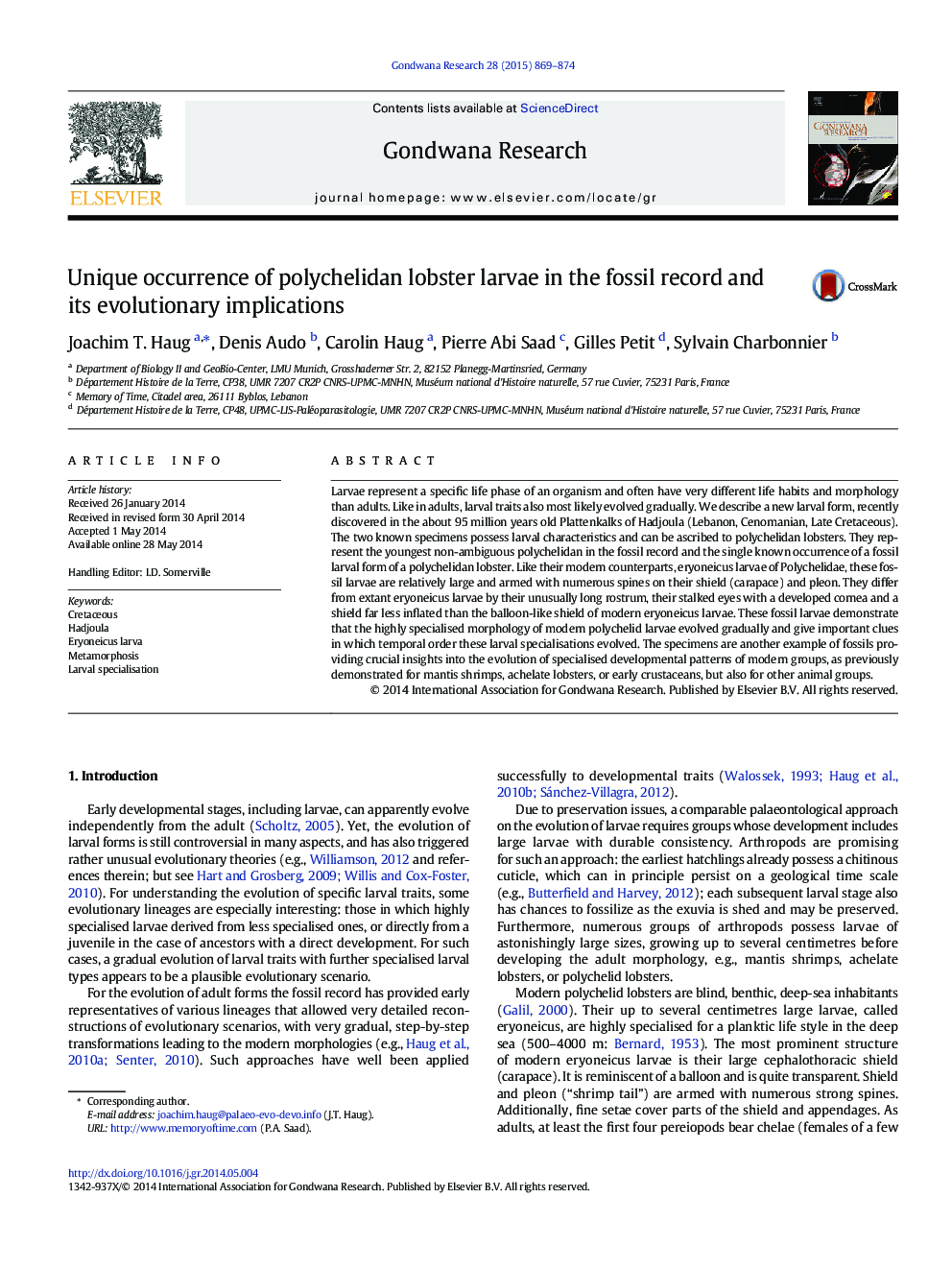| کد مقاله | کد نشریه | سال انتشار | مقاله انگلیسی | نسخه تمام متن |
|---|---|---|---|---|
| 4726895 | 1356350 | 2015 | 6 صفحه PDF | دانلود رایگان |
• We describe the first fossil occurrence of a larval polychelid lobster.
• The exceptional preservation includes eyes with ommatidia, tiny spines and setae.
• The morphology of the specimens indicates stepwise acquisition of larval characters.
Larvae represent a specific life phase of an organism and often have very different life habits and morphology than adults. Like in adults, larval traits also most likely evolved gradually. We describe a new larval form, recently discovered in the about 95 million years old Plattenkalks of Hadjoula (Lebanon, Cenomanian, Late Cretaceous). The two known specimens possess larval characteristics and can be ascribed to polychelidan lobsters. They represent the youngest non-ambiguous polychelidan in the fossil record and the single known occurrence of a fossil larval form of a polychelidan lobster. Like their modern counterparts, eryoneicus larvae of Polychelidae, these fossil larvae are relatively large and armed with numerous spines on their shield (carapace) and pleon. They differ from extant eryoneicus larvae by their unusually long rostrum, their stalked eyes with a developed cornea and a shield far less inflated than the balloon-like shield of modern eryoneicus larvae. These fossil larvae demonstrate that the highly specialised morphology of modern polychelid larvae evolved gradually and give important clues in which temporal order these larval specialisations evolved. The specimens are another example of fossils providing crucial insights into the evolution of specialised developmental patterns of modern groups, as previously demonstrated for mantis shrimps, achelate lobsters, or early crustaceans, but also for other animal groups.
Figure optionsDownload as PowerPoint slide
Journal: Gondwana Research - Volume 28, Issue 2, September 2015, Pages 869–874
